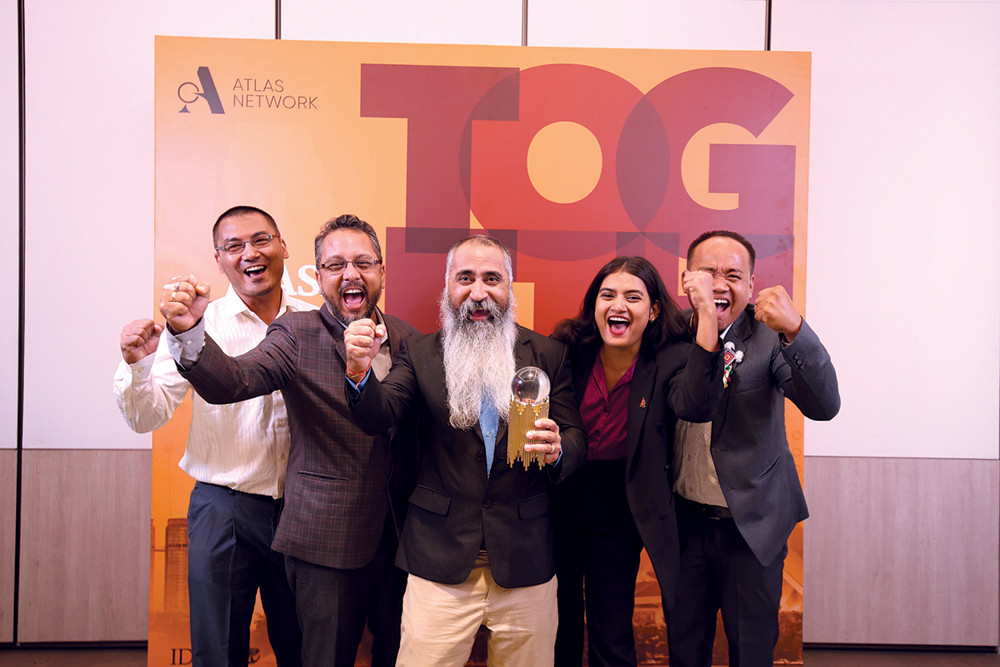
In the modern world, harnessing information and communication technology (ICT) tools for great human benefits has become an integral and accepted part of everyday life for many people. Countries around the world have been utilising these tools to collect and process data and to better their policy decisions for many years now. In recent years, traditional ICT tools have been converging into Internet of Things (IoT). Governments and businesses in different parts of the world now use IoT in their day-to-day activities to meet changing needs of their consumers. For example, some developed countries like Japan, Singapore, South Korea and United States have started employing IoT in tackling their new challenge: the aging population. In Singapore, where the proportion of senior citizens is at one in nine and projected to hit one in five by 2030- about where the Japanese are today - the government has publicly supported the idea of using IoT and associated technologies to help the elderly live independently and in their own communities with their own support networks.
Kevin Ashton, a British techpreneur, coined the term “Internet of Things” in 1999 to indicate a system that would be connected to internet and be able to gather data about objects and environment without human interaction in pursuit of minimising limitations of human entered data. The idea then seemed absurd but developments in later years led to the emergence of IoT as the third wave in the development of the internet. The Business Insider now considers IoT as ‘the next industrial revolution’ considering the already observed impacts on the way people live, work, entertain and travel as well as on the interaction patterns of governments and businesses with the world. According to Business Insider Internet of Things 2017 Report, there were 6.6 billion IoT devices in 2016 and if current trend continues, these are predicted to increase by more than three times and reach 22.5 billion. The same report also forecast that governments and businesses globally would spend $4.8 trillion in aggregate IoT investments between 2016 and 2021. Similarly, a 2016 white paper from IHS Markit has forecasted the growth of installed base of IoT market from 15.4 billion devices in 2015 to 30.7 billion devices in 2020 and 75.4 billion in 2025. Likewise, McKinsey’s 2016 Hong Kong IoT Conference has mapped potential economic impact of IoT between $2.7 and $6.2T until 2025. Also, Bain predicts that by 2020, vendors of IoT and associated solutions would earn more than $400 billion a year. Plus, International Data Corporation predicts compound annual growth rate of 21.11% and 17.5% for IoT revenue and installed base of IoT units between now and 2020 respectively thus earning a total revenue of $7.06 billion through using 28.1 billion units.
With unprecedented development of IoT in past few years and its encouraging future growth prospectus, businesses and governments around the world have begun to integrate IoT into their day-to-day activities. Mobile operators alone earned more than $11.8 billion in revenues from the IoT in 2016, up from about $7 billion in previous year, according to a study by Berg Insight. Observing this, companies like Amazon, AT&T, Cisco, Dell, General Electric, Google, Huawei, IBM, Intel, Microsoft, Samsung and Oracle are working in full swing to upgrade their platforms ready for IoT. Similarly, governments globally have been working to create better future living conditions for their citizens through IoT powered solutions. Singapore, for example, has been working tirelessly to become world’s first smart nation since Prime Minister Lee Hsien Loong launched the Smart Nation Initiative in November 2014. In South Asia, India has been working since January last year to develop 20 smart cities as a part of the government’s ‘Smart Cities Mission’ with a plan to include more cities in the list in next few years.
Nepal too, has long been considering utilizing IoT and other related technologies and create better living environments for citizens by developing smart cities in and around major urban areas in the Central and Western Regions of the country. In FY 2015/2016 budget, the government formally announced its plan to develop some of the cities into smart cities. That year, the government had announced its plan to develop Kathmandu Valley, Lumbini Region and Nijgadh as the country’s first three smart cities. The government had also allocated NRs 440 million for infrastructure development of 10 modern cities across mid-hill highway. For the current fiscal year, the government has planned to develop and implement a master plan for developing a smart city in the surrounding areas of Marsyangdi with Palungtar of Gorkha at the center of the city. Moreover, the government also has plans to invest in developing necessary infrastructures for converting over a dozen cities – including Walling and Dandeldhura – into smart cities.
Though we hardly see government taking serious initiatives to materialise its smart cities plan in most of these places, the Kathmandu Metropolitan City (KMC) and the Kathmandu Valley Development Authority (KVDA), however, have been working to develop Kathmandu as a smart city. The KMC has been planning to build essential components of a smart city through widening of the valley’s roads, launch of smart petrol pumps – for which government has already purchased 10,000 shares of Sajha petrol pump for NRs 1 million, construction of Kathmandu View Tower, conversion of Rani Pokhari into a musical fountain, construction of three multi-storeyed parking buildings each in New Road, Khulla Manch and Lainchaur and creation of a state of the art park in Tinkune. On KVDA’s part, it has already received NRs 160 million for works related to the development of a satellite city in Valley’s suburbs. But again, the government lags far behind in meeting its targets for Kathmandu Smart City plans.
In terms of developing crucial IoT pre-requisites for a smart city, so far, Kathmandu only has few digital driving licenses launched by the Department of Transport Management and a smart card payment system, currently in operation, in selected Sajha Yatayat vehicles. However, with the growing smart device users, increasing internet penetration rates in the country and easy availability of low-cost sensors, the government and businesses in Nepal could do much more in terms of utilising all available data for societal benefits.
But for that we also need to have relevant policies and capital in place to check security and privacy issues related to use and sharing of personal data across IoT platforms and also to manage problems in implementation of new initiatives - like smart cities for now - as well as well to prevent potential troubles from technological fragmentation.
 Jaya Jung Mahat, an alumnus of the Lee Kuan Yew School of Public Policy at the National University of Singapore, is a Kathmandu-based public policy researcher. He writes extensively on issues that connect economics, politics and innovation. He can be reached at [email protected]
Jaya Jung Mahat, an alumnus of the Lee Kuan Yew School of Public Policy at the National University of Singapore, is a Kathmandu-based public policy researcher. He writes extensively on issues that connect economics, politics and innovation. He can be reached at [email protected]
 Jaya Jung Mahat, an alumnus of the Lee Kuan Yew School of Public Policy at the National University of Singapore, is a Kathmandu-based public policy researcher. He writes extensively on issues that connect economics, politics and innovation. He can be reached at [email protected]
Jaya Jung Mahat, an alumnus of the Lee Kuan Yew School of Public Policy at the National University of Singapore, is a Kathmandu-based public policy researcher. He writes extensively on issues that connect economics, politics and innovation. He can be reached at [email protected]
Published Date: May 28, 2017, 12:00 am
Post Comment
E-Magazine
RELATED Innovation


.jpg)


.jpg)